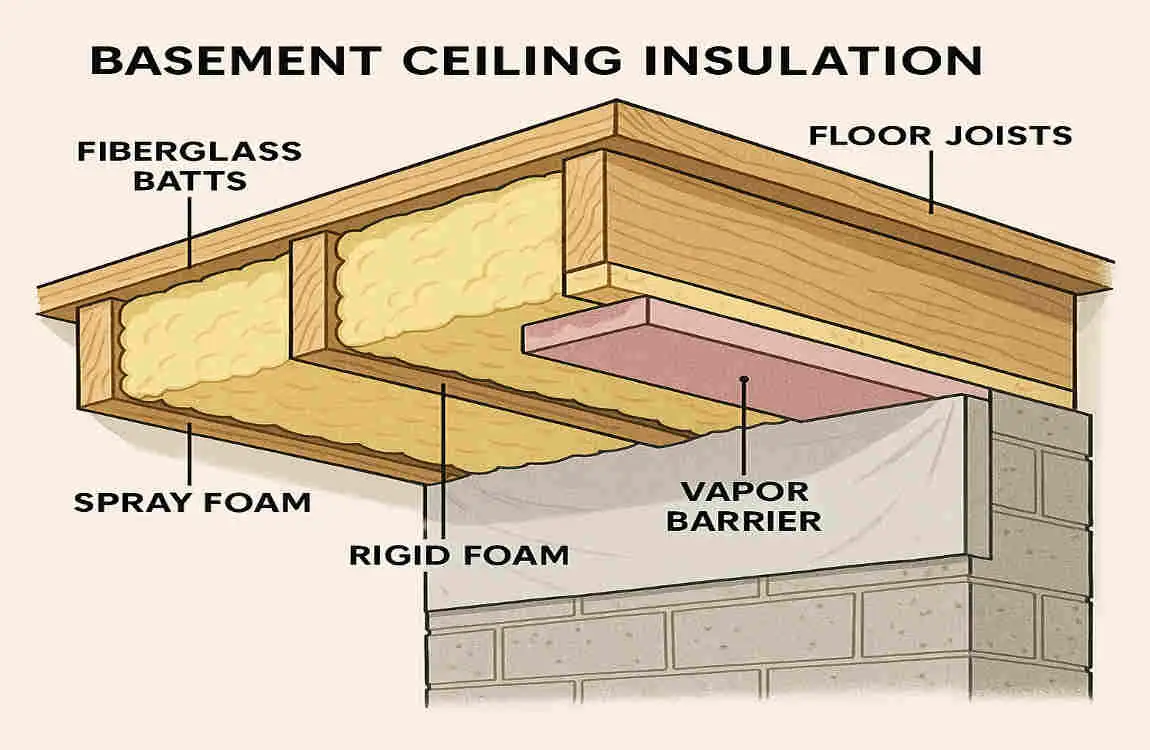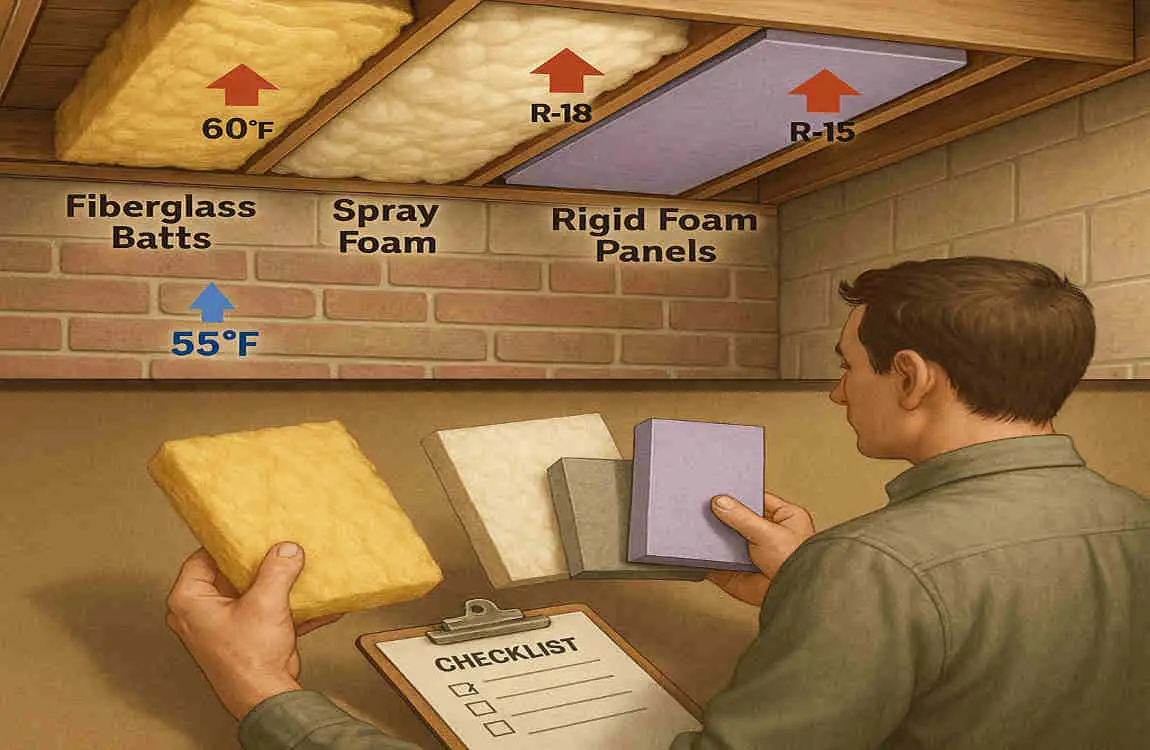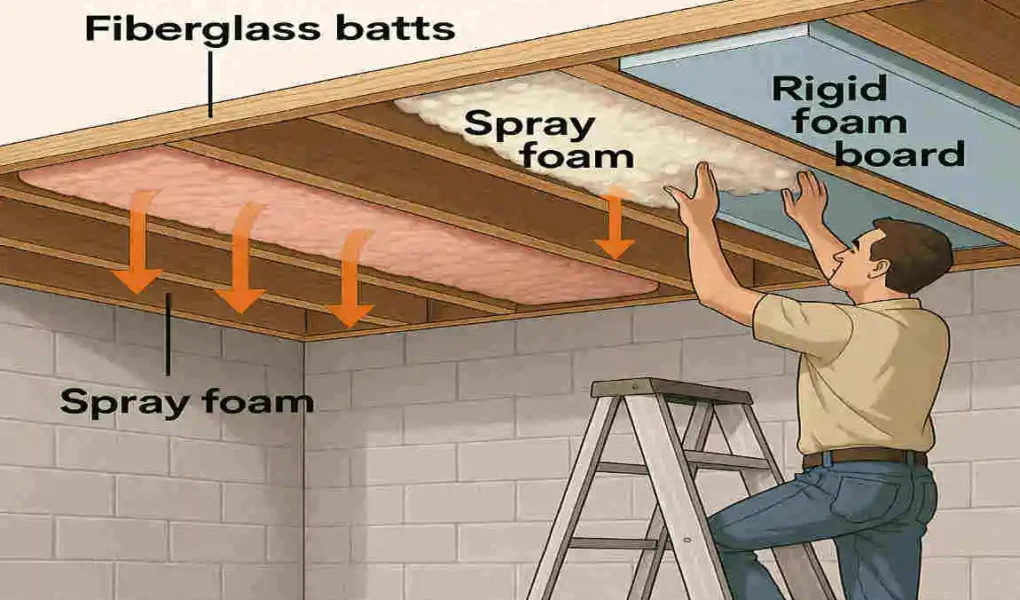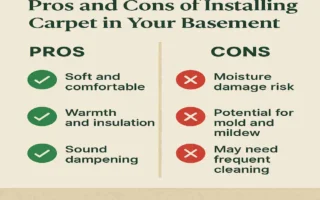When it comes to creating a comfortable and energy-efficient home, insulation plays a crucial role. One area that often gets overlooked is the basement ceiling. Choosing the proper basement ceiling insulation can significantly impact your comfort, energy bills, and moisture control.
Understanding Basement Ceiling Insulation

Basement ceiling insulation is a layer of material installed between the basement and the floor above to regulate temperature, reduce noise, save energy, and prevent moisture issues. Unlike insulation in walls, floors, or attics, basement ceiling insulation has unique considerations due to the below-grade environment and potential moisture exposure.
Key benefits of basement ceiling insulation include:
- Temperature regulation for a more comfortable living space
- Soundproofing to minimize noise transfer between levels
- Energy savings by preventing heat loss or gain
- Moisture barrier to protect against dampness and mold growth
Factors to Consider When Choosing Insulation for Basement Ceiling
Before selecting an insulation material for your house basement ceiling, consider the following factors:
Climate and temperature
Your local climate and temperature range will influence the required R-value (insulation effectiveness) for optimal performance.
Basement usage
Insulation needs may differ for finished basements used as living spaces versus unfinished utility areas.
Moisture and vapor barriers
Basements are prone to moisture, so choose insulation with appropriate vapor barriers or moisture-resistant properties to prevent issues.
Budget and installation costs
Consider the upfront material costs and long-term energy savings, as well as professional installation expenses if needed.
Local building codes
Ensure that your insulation choice and installation method comply with local building regulations to meet safety and efficiency standards.
Types of Basement Ceiling Insulation Materials
There are several common insulation materials suitable for basement ceilings, each with its own advantages and considerations.
Fiberglass Insulation
Fiberglass is a popular and affordable option, available in batts or loose-fill forms.
Pros:
- Cost-effective
- Easy to install
- Good R-value per inch
Cons:
- Potential for moisture absorption
- Requires careful installation to avoid gaps
Spray Foam Insulation
Spray foam insulation expands to fill gaps and provides excellent air sealing.
Benefits:
- Superior air sealing and insulation
- Moisture-resistant closed-cell options
- High R-value per inch
Considerations:
- Higher cost compared to other materials
- Professional installation recommended
Mineral Wool (Rock Wool) Insulation
Mineral wool offers excellent fire resistance and soundproofing properties.
Advantages:
- Fire-resistant and non-combustible
- Excellent sound absorption
- Moisture-resistant and durable
Rigid Foam Board Insulation
Rigid foam boards provide high R-values and can be used alone or in combination with other insulation types.
Benefits:
- High R-value per inch thickness
- Prevents thermal bridging
- Moisture-resistant options available
Reflective or Radiant Barrier Insulation
Reflective insulation is less common for basement ceilings, but it can be beneficial in certain situations.
When to consider:
- In warm climates, to reflect heat
- When ductwork or pipes are present in the basement ceiling
Insulation Type Cost R-Value per Inch Moisture Resistance Ease of Installation
Fiberglass $ 2.2 – 2.7 Low Easy
Spray Foam $$$3.6 – 6.5 High Professional
Mineral Wool $$ 3.0 – 3.3 High Moderate
Rigid Foam $$ 4.0 – 6.5 High Moderate
Reflective $$ Varies N/A Moderate
How to Determine the Best Insulation for Your Basement Ceiling

To choose the best insulation for your basement ceiling, follow these steps:
- Assess the condition of your basement, including moisture levels and the presence of existing heating or cooling systems.
- Consider your budget and balance upfront costs with potential long-term energy savings.
- Determine the appropriate R-value for your climate zone and desired insulation performance.
- Decide whether to tackle the installation yourself or hire a professional for complex projects or materials that require specialized expertise.
Installation Tips for Basement Ceiling Insulation
Proper installation is key to ensuring your basement ceiling insulation performs effectively. Here are some tips:
Preparation
- Clear the basement ceiling area of obstacles and debris
- Repair any leaks or moisture issues before installing insulation
Safety precautions
- Wear protective gear such as gloves, goggles, and a dust mask
- Ensure proper ventilation, especially when using spray foam
Step-by-step installation
- Measure and cut insulation to fit between joists or rafters
- Secure insulation using appropriate fasteners or adhesives
- Seal gaps and edges with tape or caulk to prevent air leaks
- Install vapor barriers if needed for moisture control
Preventing common problems
- Avoid compressing insulation, which reduces its effectiveness
- Use proper ventilation to prevent moisture buildup
- Seal air leaks around pipes, ducts, and wires to maximize insulation performance
Maintenance and Upkeep for Basement Ceiling Insulation
To ensure your basement ceiling insulation remains effective over time:
- Regularly inspect for signs of damage, sagging, or moisture intrusion
- Check insulation performance by monitoring energy bills and indoor comfort levels
- Replace or upgrade insulation if it becomes compressed, wet, or damaged
Environmental and Health Considerations
When selecting and installing basement ceiling insulation, consider the following environmental and health factors:
- Choose environmentally friendly insulation materials with low embodied energy and minimal off-gassing.
- Opt for materials with low allergen potential and minimal irritants.
- Properly dispose of old insulation and recycle materials when possible.




